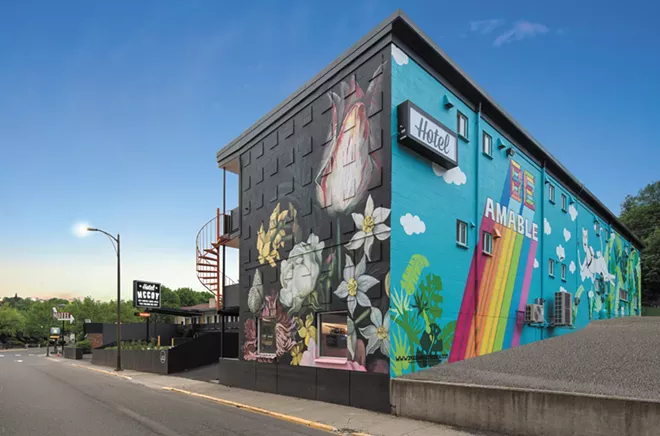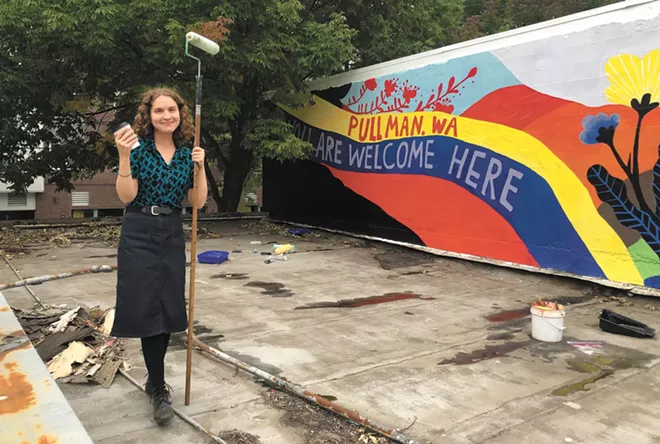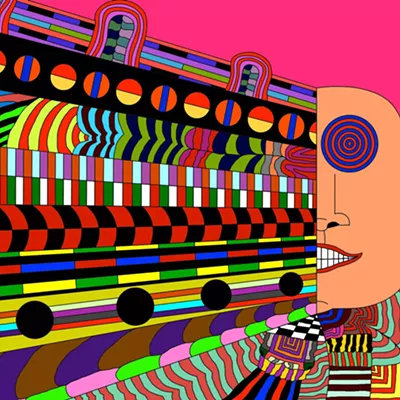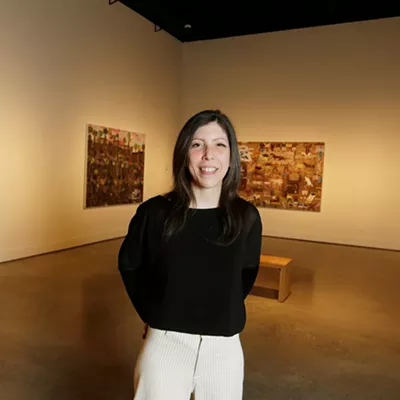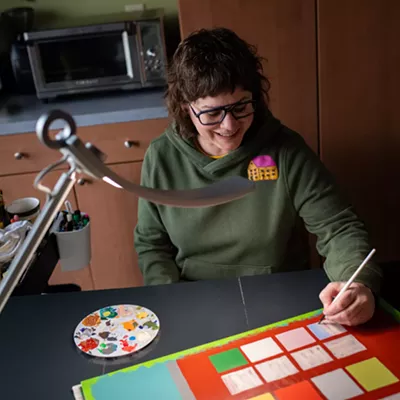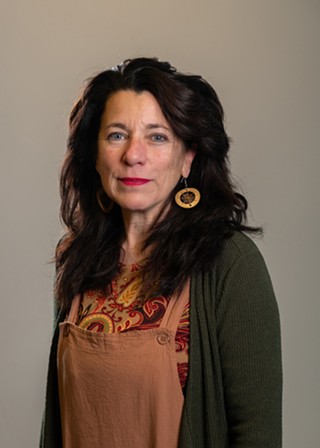T here's a new picture developing of Pullman's visual arts scene, one that adds an additional focal point besides Washington State University and its venerable Jordan Schnitzer Museum of Art.
Over the past few years, several new arts-related entities have emerged in town: the new nonprofit Pullman Arts Foundation, the arts-forward Hotel McCoy, Terracotta clay arts studio, and a new art gallery. Added to Pullman's existing venues, these newcomers are helping highlight the college town's evolving arts community.
Two years ago, Pullman had scant arts entities, beyond public artwork on the WSU campus and in its museum. Studio 509, located inside the Gladish Community & Cultural Center, offers all-ages arts instruction, while Art Niche is an artist cooperative.
Pullman's Arts Commission still exists, although six of the seven board positions have remained vacant since a kerfuffle ensued over an apparently controversial public artwork in 2020.
"Part of the genesis of [Pullman Arts Foundation] was, honestly, the difficulty of creating some kind of public art project here in Pullman that connected with the Black Lives Matter movement," says WSU art professor Joe Hedges, who co-founded the nonprofit with his wife and fellow artist, Jiemei "May" Lin.
The backstory to the BLM mural, which played out in the press and on social media, involved a back-and-forth between the Pullman Arts Commission and City Council. Caught in the middle were local artists and community members wanting to draw attention to systemic racism in the wake of George Floyd's 2020 murder by Minnesota police.
After the council reversed course on even the idea of a mural, the Arts Commission all but disbanded. In the meantime, Hedges and Lin created the Pullman Arts Foundation (pullmanartsfoundation.org), tapping artist and fellow WSU educator June T Sanders and Pullman School Pantry Program co-founder Margaret "Meg" Gollnick to serve on the board.
Quickly, the grassroots group raised necessary funds and secured another location for the BLM mural, the former Mimosa building on Main Street near Pine.
In addition to murals at Kamiak and Jefferson elementary schools and the Palouse Discovery Science Center, the foundation also realized it could fulfill other needs for artists, arts supporters and the community-at-large, Hedges says.
"We had started to meet people that were really engaged locally and really cared about the arts," he adds.
The foundation created arts-centric meetups, and this past April it stepped into the breach to help organize an art festival, dubbing it the Sunset Artfest and working in collaboration with Lumberyard, Art Niche and Hotel McCoy.
Hotel McCoy is the second of two boutique hotels from development company Preface (its other hotel is in Tucson), and it's proven to be an ideal partner in many Pullman Arts Foundation initiatives.
Art is part of their concept, says the hotel's operations manager, Amanda "AR" Rochelle.
"We want art to be accessible to people of all socioeconomic backgrounds."
Thus the Pullman hotel is full of art, inside and out. In addition to five exterior murals, the hotel features paintings, prints and other artwork throughout its rooms and shared spaces, all of it for sale.
"We are a commission-free hotel," says Rochelle. "So anything that we sell goes directly back to the artist, which is a really awesome deal."
The murals include Jaz Gonzalez Cerda's vibrant "Be Amable" on the Paradise Street side of the hotel, as well as murals by Lin, Hedges, Rebecca Lloyd and Sarah Barnett.
Barnett credits the mural experience with helping keep her in Pullman after she'd completed her master's degree in fine arts at WSU, she says.
"I think the collaboration aspect was really valuable for me as a person," says Barnett, who also stayed to take a job as an adjunct art instructor at the university.
Like Barnett, Candace Baltz formed strong ties to the university while a student. She met her husband in the '90s when both were students and he was editor-in-chief of WSU's student newspaper, The Daily Evergreen, a title she would eventually hold, too.
Like a boomerang, the couple left and returned. Left and returned.
"During the pandemic, I think like a lot of people, we got a chance to do deep reflection on 'what do we want in life?'" The answer for the couple was Pullman.
And for Baltz personally, the answer was also pottery, like the joyful, healing experience of being in a clay art studio while growing up in Oregon.
"To get to spend unstructured time in a studio, day after day, and work under a professional potter" had a profound impact on her, Baltz says. "It prepared me for life."
"My hope is to pay that forward and [help others] make that kind of reconnection with ourselves and each other," says Baltz.
Her business Terracotta (terracottapullman.com) offers loosely structured classes and open studio time for any level potter.
The Greystone Grand Gallery and Gifts (greystonegrandgallery.com) is the most recent addition to Pullman's arts scene, slated to open in October.
When her wife, Holly, was hired as executive director of Pullman Downtown Association, says gallery founder Desirée Greystone, it cemented her decision to look for studio space in town.
The next thing Greystone knew, she was signing the contract for a two-story, 8,000-square-foot building that's now being transformed into a gallery for local, regional and international artists.
"I love Pullman and I'm excited that I get to be a part of the growing art scene," says Greystone.
Hedges echoes that sentiment.
"Selfishly, because we live here, we really want to see the arts thrive here [and] of course not just for us but for other folks in the community," says the WSU art professor.
"We really believe that having artists around and having public art to see just makes a community more vibrant, richer and provides opportunities for conversations." ♦

